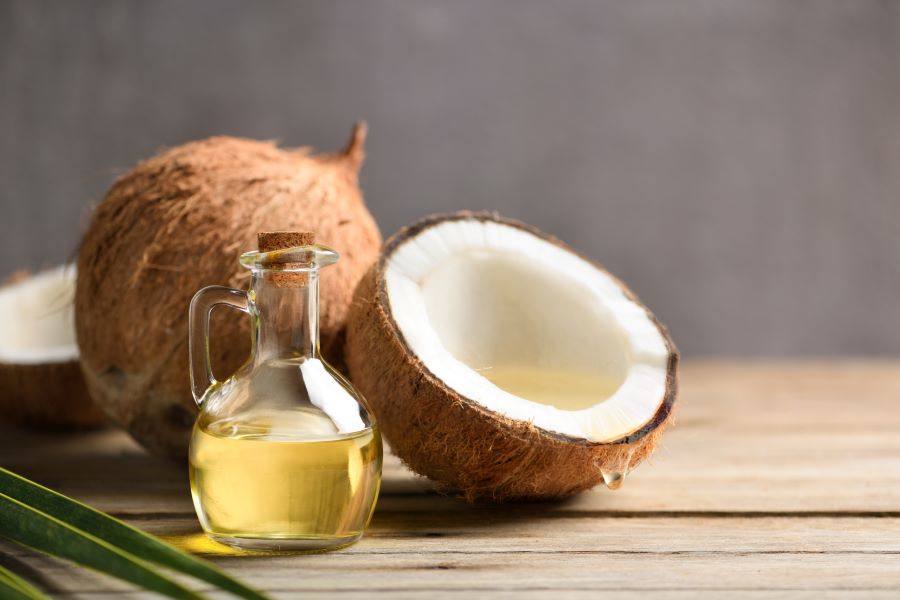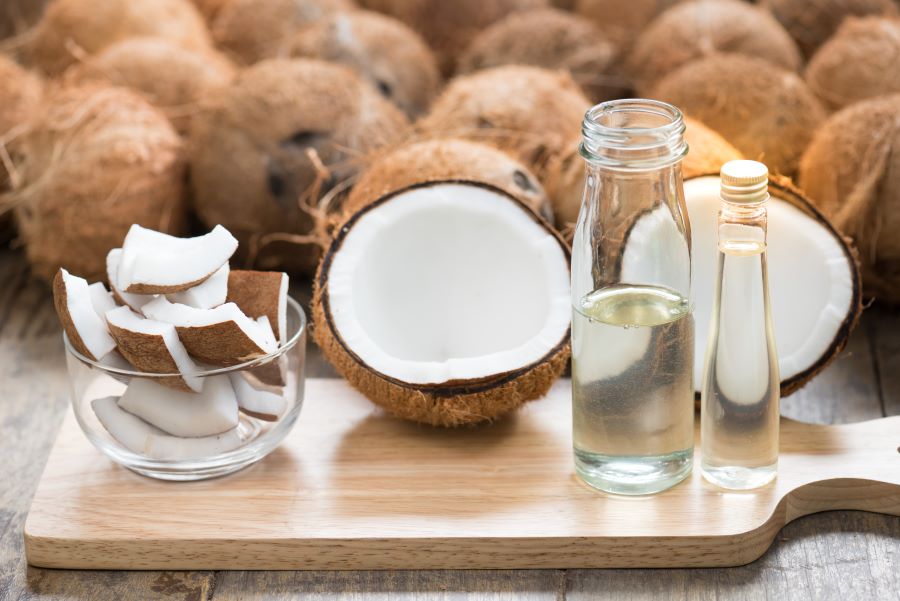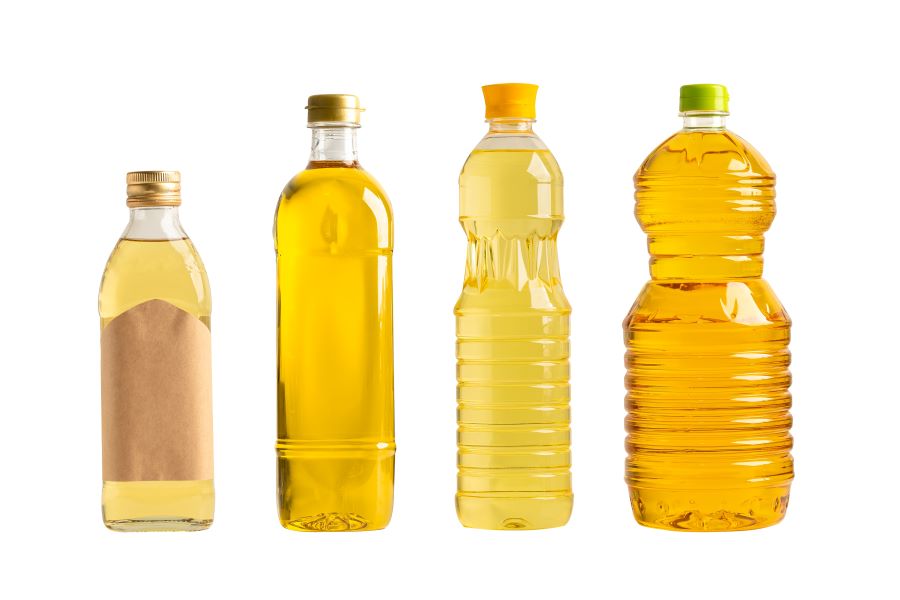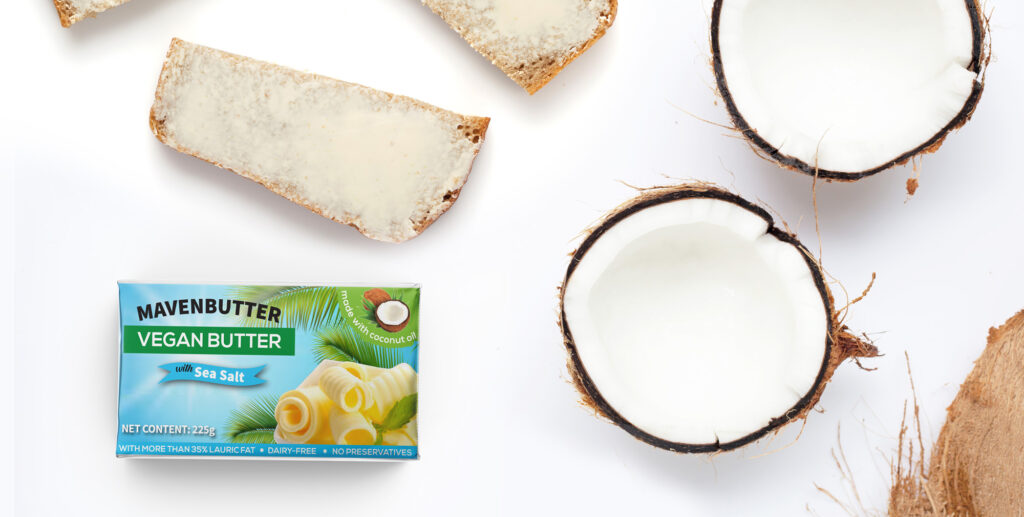
Coconut oil has become a staple in culinary circles, stirring up a lively debate on the merits of virgin coconut oil vs. refined coconut oil. This goes beyond taste or preference and explores how each oil can improve your cooking. Understanding the differences between these two types of coconut oil is critical if you are a serious home cook, a professional chef, or looking for healthier cooking alternatives.
This post serves as your go-to culinary guide, covering only the distinct qualities of virgin and refined coconut oil, the advantages and disadvantages of each in the kitchen, and how to select the best kind for your recipes. From the smoke points that matter for frying to the flavors that enhance your baking, we’re here to unveil the culinary secrets of each oil, ensuring your kitchen adventures are both delicious and informed.
Virgin Coconut Oil
Organic virgin coconut oil (or VCO), or unrefined coconut oil, is extracted from coconut meat without undergoing additional processing.
It has two methods for extraction:
● Dry (Expeller or Cold-pressed)
This technique involves using expellers to extract coconut oil from dried coconut flesh, usually desiccated coconut. This method produces a higher yield of oil, but the heat used to dry the meat can affect the quality and taste.
● Wet (Centrifuge)
With this method, fresh coconut meat is grated and pressed to extract the milk. The oil (VCO) is separated from the water phase of the milk using a centrifuge. This preserves more of the natural flavor and nutrients. VCO may also be produced from the milk via a settling or fermentation process commonly adopted by small-scale processors.
Solid at room temperature, this coconut oil has a strong coconut aroma and flavor that can enhance the dishes it is used in. Notably, its smoking point is 350°F (177°C).

Refined Coconut Oil
The difference between refined (RBD) and unrefined coconut oil (or VCO) is the production method. Refined coconut oil goes through refining steps to purify the oil and eliminate the strong coconut odor in order to enhance its suitability for cooking purposes.
RBD coconut oil suppliers extract raw coconut oil from dried coconut meat, which is industrially known as copra. This step initially mimics the dry extraction method for unrefined coconut oil. However, further steps may vary based on the specific manufacturing process employed.
Here are some of the steps to refine coconut oil:
● Degumming
Combining degumming agents and crude coconut oil eliminates gums that may impact the oil’s stability. The gums are removed by filtration through a bed of bleaching clay and activated charcoal.
● Neutralizing
In the chemical refining method, sodium hydroxide, or lye, is introduced into the oil to neutralize and remove free fatty acids in the form of soap. This process also removes gums from the crude coconut oil. The oil is then washed with water to remove soap. Free fatty acids are degradation products of coconut oil and contribute to off flavors and the reduction in the oil’s smoke point.
● Bleaching
The oil is passed through a bed of activated clay and activated carbon derived from coconut shells to reduce color and remove gums and other impurities via adsorption.
● Stripping
In the physical refining method, free fatty acids are removed by boiling them under a vacuum, as opposed to neutralizing in the chemical refining method.
● Deodorizing
The oil undergoes steam-aided deodorization to eliminate any lingering coconut aroma or flavor.
Compared to VCO, the coconut oil produced through these processes has a neutral odor, more consistent sensory -odor and flavor characteristics- and higher smoke points ranging from 400–450°F (204–232°C). This elevated smoke point renders it ideal for high-temperature cooking.

Pros and Cons of Virgin Coconut Oil vs. Refined Coconut Oil
When choosing between virgin coconut oil and refined coconut oil (RBD coconut oil) for your culinary needs, several factors come into play. Both oils offer unique benefits and limitations, especially concerning their smoke point, nutrient content, flavor, and cost. Understanding these differences is key to optimizing your cooking and baking experiences.
Let’s delve into the pros and cons of each:
Smoke Point
With a smoke point of around 350°F (177°C), virgin coconut oil is suitable for medium-heat cooking methods. This lower smoke point limits its use for high-heat cooking techniques like deep frying but works well for sautéing, baking, and gentle frying.
On the other hand, refined coconut oil boasts a higher smoke point of about 400°F (204°C), or higher, making it a versatile option for high-heat cooking, such as frying and sautéing. This characteristic makes it a preferred choice for cooks looking for an oil that can withstand higher temperatures without breaking down.
Richness in Nutrients
Since virgin coconut oil is minimally processed and retains most of its natural nutrients, antioxidants, phytochemicals, and even some proteins, it’s a healthier choice for those looking to enrich their diet with the oil’s natural benefits.
While still beneficial, refined coconut oil loses some of its nutritional content during the refining process. However, it remains a good source of medium-chain triglycerides (MCTs) known for their quick absorption and energy-boosting properties.
Flavor and Aroma
Virgin coconut oil retains coconuts’ distinct, tropical aroma and flavor, enhancing dishes with a subtle sweetness and rich coconut profile. This makes it ideal for recipes with the desired coconut flavor, adding a unique twist to baked goods, smoothies, and Asian dishes.
RBD coconut oil is neutral in flavor and aroma, making it a more versatile cooking oil that won’t overpower dishes with a coconut taste. It’s perfect for those who want coconut oil’s benefits without affecting their meals’ flavor profile.
Cost
Generally, virgin coconut oil is more expensive versus coconut oil RBD due to lower production yields and higher production costs. This can be a deciding factor for consumers balancing health benefits with budget constraints.
Refined coconut oil tends to be more affordable, appealing to those who prioritize cost-efficiency but still want to incorporate coconut oil and the goodness of MCTs into their cooking. The lower price point and neutral flavor make it a popular choice for everyday cooking and baking needs.
Which One Should I Use?
When it comes to the dilemma of coconut oil for cooking—refined or unrefined—it often boils down to personal preference. Yet, it’s essential to recognize that certain culinary situations might favor one type over the other.

Baking
The choice between RBD versus virgin coconut oil for baking with coconut oil hinges on your flavor preferences. Refined coconut oil is often the go-to since it lacks the distinctive coconut taste and aroma, ensuring your baked treats do not carry unintended coconut notes that might overshadow other desired flavors.
On the flip side, if the coconut essence of unrefined coconut oil appeals to you, its lower smoke point should not compromise your baking. The internal temperature of baked goods rarely matches the oven’s heat, so even at settings above 350°F (177°C), your creations should emerge perfectly delightful.
Both virgin coconut oil and refined coconut oil serve as excellent vegan substitutes for butter, thanks to their solid state at room temperature. This characteristic makes coconut oil a fantastic choice for crafting vegan-friendly baked items like biscuits and pie crusts, where solid fats contribute to a tender, flaky texture.
Cooking
Refined coconut oil’s elevated smoke point positions it as the superior choice for cooking. It is ideal for high-heat cooking, such as stir-frying and sautéing. This allows you to cook at higher temperatures, producing a crispy but not burnt product.
You can still cook with unrefined coconut oil, although you may need to cook at a lower temperature for a more extended period.
Spreading
Refined coconut oil has a neutral taste and aroma, making it perfect for spreading on toast or replacing butter on pancakes or waffles. Unrefined coconut oil has a stronger flavor, so it may not be ideal for those who do not enjoy the taste of coconut.
Salad Dressing
Unrefined coconut oil adds a tropical twist with its coconut flavor for salad dressings, perfect for exotic salads. However, it solidifies below 76°F (24°C), which could be impractical for chilled salads or refrigerated dressings. Refined coconut oil, being flavor-neutral, offers versatility without the coconut taste but faces the same solidification issue. Mixing coconut oil with liquid-at-room- temperature oils like olive or avocado oil can solve this, creating a flavorful and practical dressing for any temperature.

The Choice of the Right Coconut Oil for Cooking, Whether Refined or Unrefined, Depends on You
Choosing between virgin and refined coconut oil impacts flavor, health, and cooking performance.
Virgin coconut oil, with its rich aroma and nutritional benefits, is perfect for adding tropical flair to dishes. In contrast, refined coconut oil’s high smoke point and neutral taste make it ideal for high-heat cooking and when subtlety is key. Both types offer vegan alternatives to butter, enriching baking and cooking with distinct advantages.
Ultimately, your choice should align with personal taste, health considerations, and recipe requirements, enabling you to harness the full potential of coconut oil in your culinary creations.
Are you looking for a coconut oil exporter for your business? Oleo-Fats has your back! Contact us today for more information on virgin coconut oil versus refined coconut oil to see which is better for your venture.


